Ask someone to draw a tree and often you’ll get something looking a bit like this.
But that’s only half of the picture. Usually, more than half of a plant exists underground. Yet, as gardeners we often neglect this fact and ignore the most important aspect of gardening… the soil!
Soil has an impressive food web of predators and prey. Earthworms, bacteria, nematodes, amoebas, invertebrates and fungi all coexist. They decompose organic matter and ultimately make nutrients available to feed our plants. “Soil” is different to “dirt” in that soil is living and dirt isn’t. “Dirt” consists only of particulates such as sand, silt and clay particles. It doesn’t have organic matter or living things.
When people try to grow plants in containers, one of the common pitfalls we see is the use of poor soil. Last February, at the Sustainable Living Festival, I presented on the topic of “Growing Food in Small Spaces”. For the presentation, I wanted to set up an experiment to highlight the importance of soil in obtaining great results. Here’s how I set up the experiment and what results we discovered!
Setting up our Soil Experiment
At Leaf, Root & Fruit we commonly use two types of soil for our garden installations. We use a premium blended soil in our cypress raised garden beds and wicking beds. It consists of two soils and three manures. For other projects where we need a lighter medium, we use a bulk potting mix blend. Both are ordered in bulk by the cubic metre. We get good results from both blends. However, they’re not practical for people to order if they are gardening in small spaces such as backyards and courtyards. I wanted to compare the soils we use, to what is more readily available to everyone.
So we made a quick trip to “The Big Green Box” and picked up a bag of the most expensive potting mix and also one of the cheapest. We then had four different types of “soil” to compare.
We also purchased a punnet of each of the following seedlings:
- Sweetcorn
- Cos Lettuce
- Chilies
Each punnet had eight seedlings that were relatively equal in size and condition to the rest within that punnet.
We then potted up two of each variety of seedling into each of the four soil types. We watered them in well and then set them up against a north facing brick wall with each seedling getting equal access to natural sunlight. An automatic sprinkler system that watered each seedling relatively equally was set up. Plants were shuffled around every few weeks to ensure none of them were at an unfair advantage.
The Results of our Soil Experiment
As you can see from the images below, there were some incredible differences between the different types of soil. For all three varieties of veggies, our bulk potting mix was the best performer. Our 5-way mix performed almost as well as this for the lettuce and chillies. For some reason the two corn plants died a day or so after transplant in this soil blend. Corn is notorious for not transplanting well, so I suspect that it was simply transplant shock rather than being specifically caused by the soil.
What was amazing was that despite one bagged potting mix being 5 times more expensive that the cheap bagged potting mix, there was virtually no difference in performance. Both were equally terrible, with stunted, horrible plants that looked washed out and suffering from many nutrient deficiencies.
So what are the implications?
Well obviously, you all want to know where you can get your hands on some of the bulk potting mix that we use. Unfortunately, that’s not going to be very easy for you. So instead we’re going to have to find alternative ways around this. More than likely you’re going to have to enrich your potting mix with some fertilizers of some description to get your plants to thrive in pots.
Recently we expanded the experiment to test the performance of a wider range of potting mixes. We also test out a range of fertilizers (mostly certified organic ones) to see what combinations might work well for those of us limited to major hardware chains and local nurseries, for our container gardening supplies. We’ll continue to road test gardening products such as these. Sign up to our newsletter to make sure you don’t miss out on seeing the results.
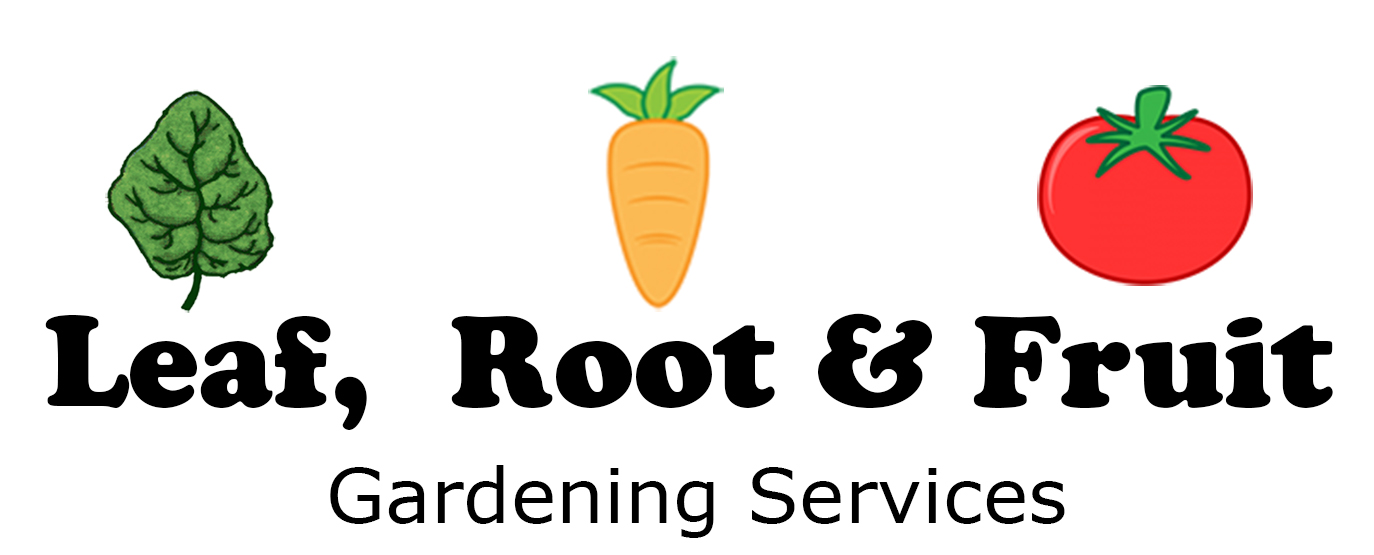
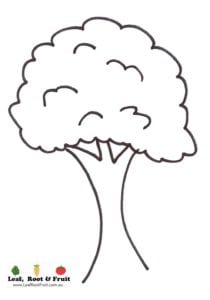
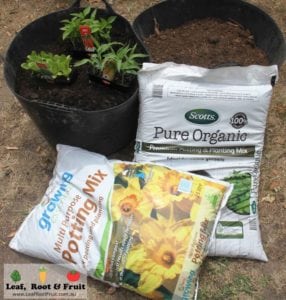






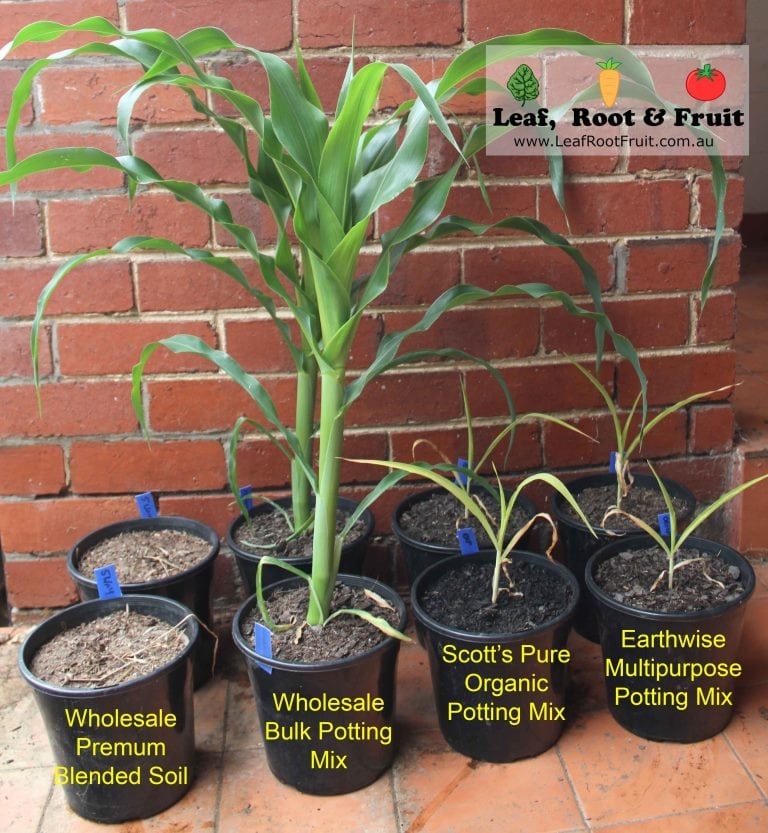
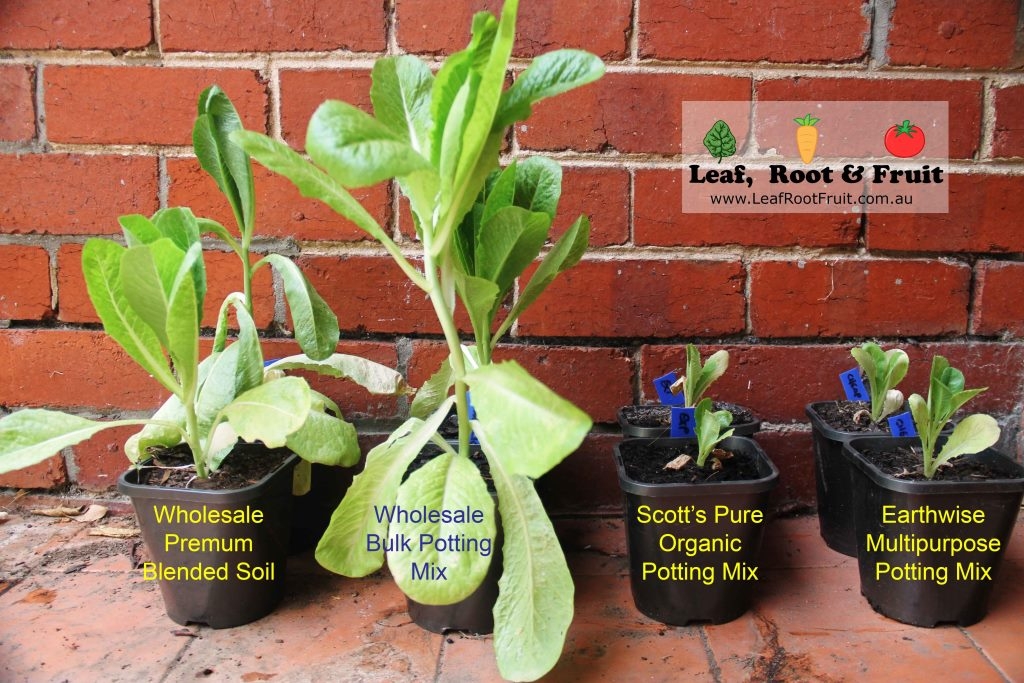
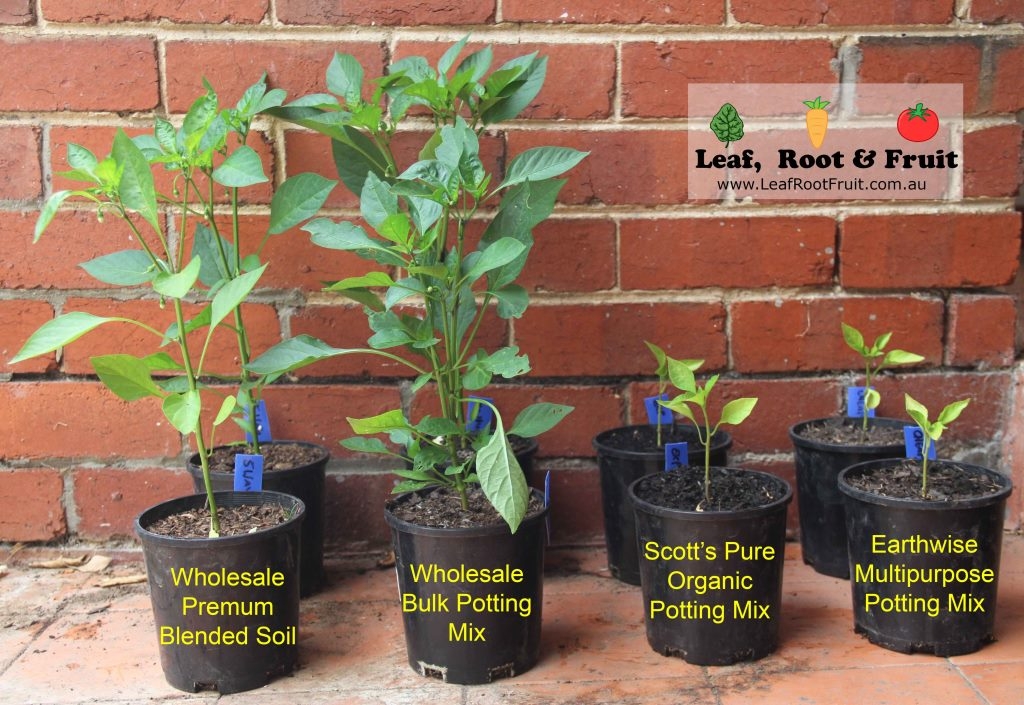

First off l would like to say how much l love your newsletters. I always get excited when l see them pop up in my email.
I have a large family and l rent. I decided 2 years ago that l needed to grow more food to primarily save money and put more nutrients into my kids mouths. I’ve always wanted a small farm but due to a work injury that is probably never going to happen. So l became a backyard farmer.
First off l would recommend anyone growing in containers to try and get fabric rootpouches than plastic. They hold water better. Keep the soil temp more even, and air prune. The results are second to none.
I use the cheapest potting mix l can find. Potting mix to me is just the base. No matter how good it is supposed to be it should always be improved. I add mushroom compost, cow and chicken manure. I also add some slow release fertilizer too. I feed weakly weekly with a seaweed and liquid feed. Every month or so l throw a handful of chicken manure pellets on top of the soil.
Remember in containers everytime you water your plants you are flushing the soil. Your plants depend on you for everything. Plants like tomatoes, zucchini are very heavy feeders so they need more food.
I have over 50 fruiting trees and plants. Also strawberries.vegetables.roses and even brugsmansia all growing in containers. It can be done.
Hi Steve,
Thanks for the fantastic feedback. Your points on growing in containers are spot on. We’re also renters, so we have a lot of fruit trees, berries and perennial veggies in pots and tubs. You’ve got to keep them well fed and watered! Round two of our experiment looks at 11 different types of potting mixes. Although this is not really as important as the 9 different fertilizing regimes we are also trialing on two different types of potting mix (including the cheapest potting mix from this original experiment). I set the experiment up three weeks ago and the results we’re already seeing are quite convincing. Stay tuned!
Good Luck and Happy Gardening!
Duncan
What on earth are fabric rootpouches?
Google them or there are videos on youtube about them. A guy called robbob aka bitsouttheback uses and sells them. Also an American guy called larry hall has done some videos with them too. They are far superior to anything else as a planting container
Thanks, I’ll look
I lover reading your newsletter. Bought raised garden beds about 2 years ago. 4 x 3000x1000x850, 2x 1500 x 1000×850 and 8000lt round water tank. Best thing ever I did for my back and saving a lot of water. Last year I was picking 300 cherry tomatoes a day. The plants grew to over 7 feet tall (never seen anything like it). I do my own compost and mix this in with the soil. This year I placed my own compost, and also placed equal parts of organic potting mix, cow manure and aged sheep manure to the bed. Will see what this results bring when I plant tomatoes. This year I will also try and put pumpkins in large tubs (one seed per tub) instead of planting them on the lawn. Will also try the same method for the zucchinis. Another bed is ready to go and will plant cucumbers, eggplant,and raddish. Another bed will be with lettuce and carrots and another bed with beans. Will let you know the outcome and maybe send in some photos.
wi
Hi Anne,
Thanks for sharing your enthusiasm and experiences. I’m sure others will find your comments inspiring. Please keep us all updated on progress.
Good Luck and Happy Gardening!
Duncan
Did you test the pH?
Hi Matthew,
no I didn’t test the soil pH. I don’t believe that the little DIY test kits are that accurate. They are good for soil, but not so much for soil with high organic content and composts. Sending soil samples off to a laboratory didn’t fit within the budget.
Happy gardening
Duncan